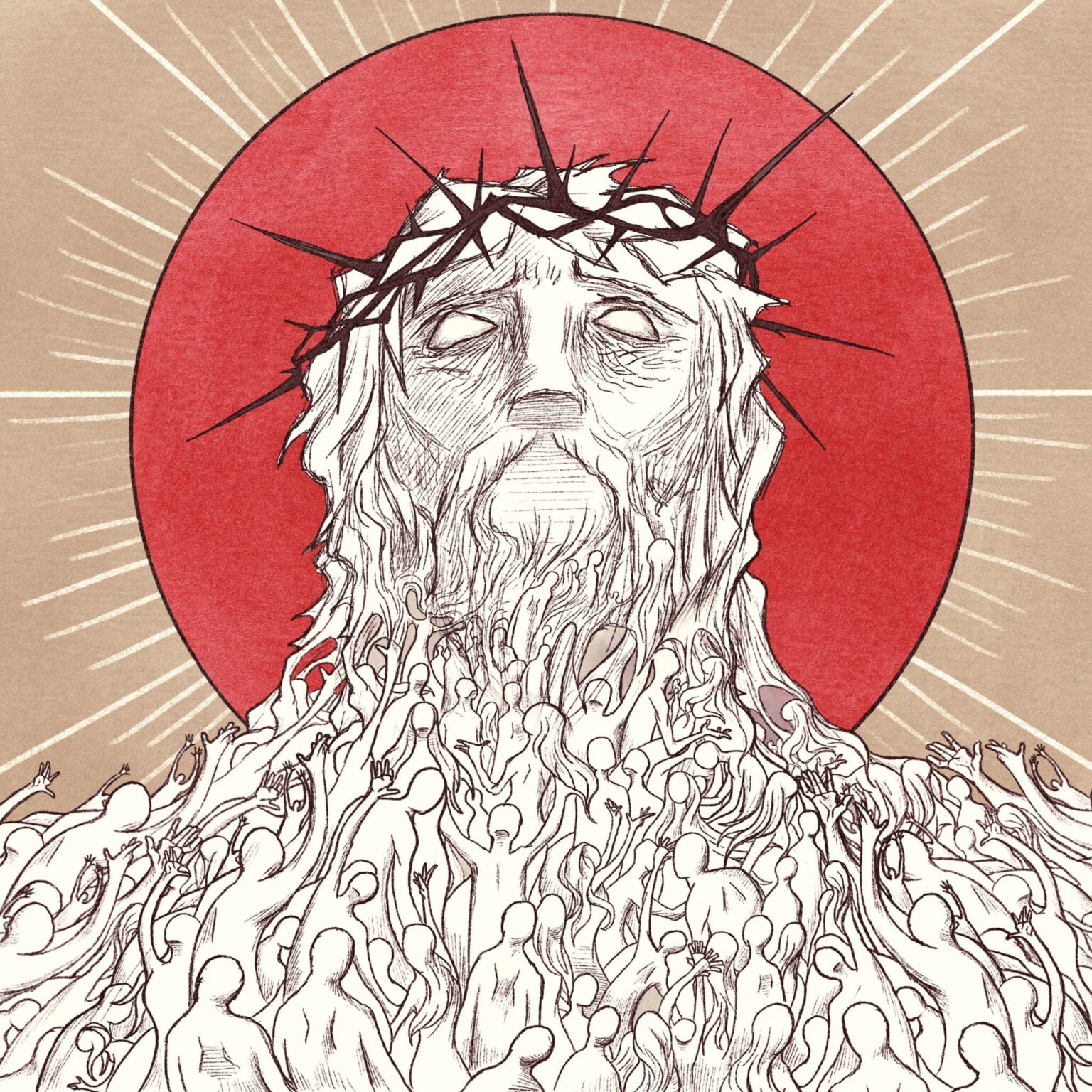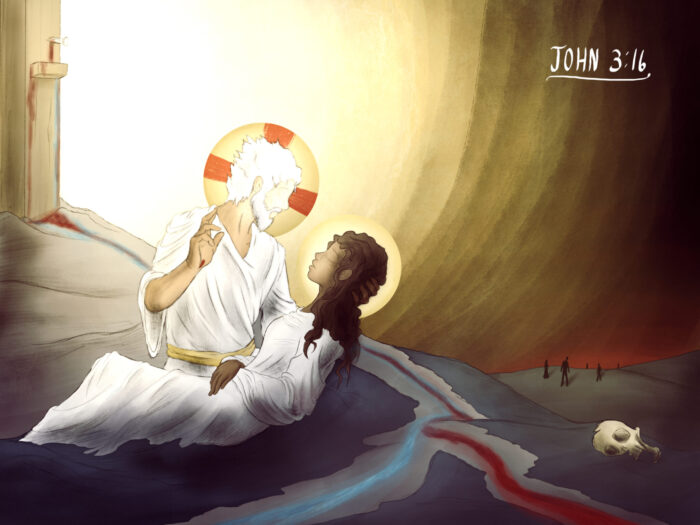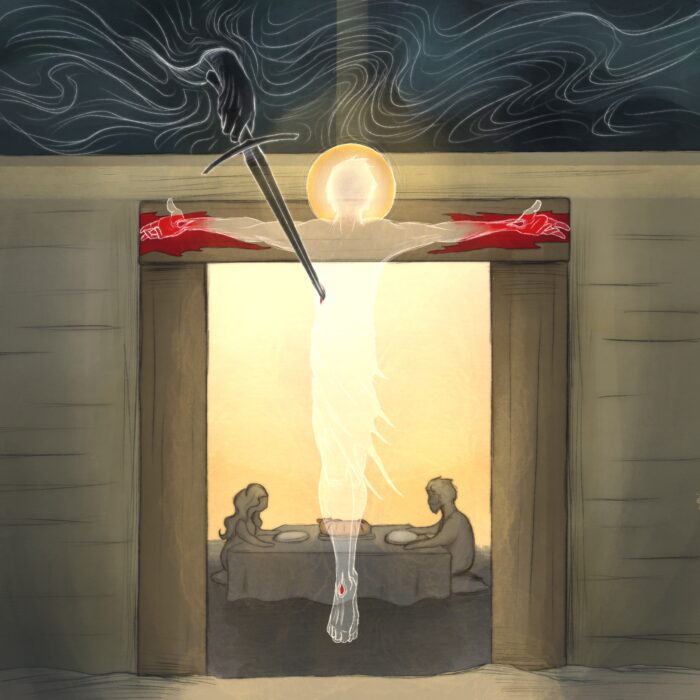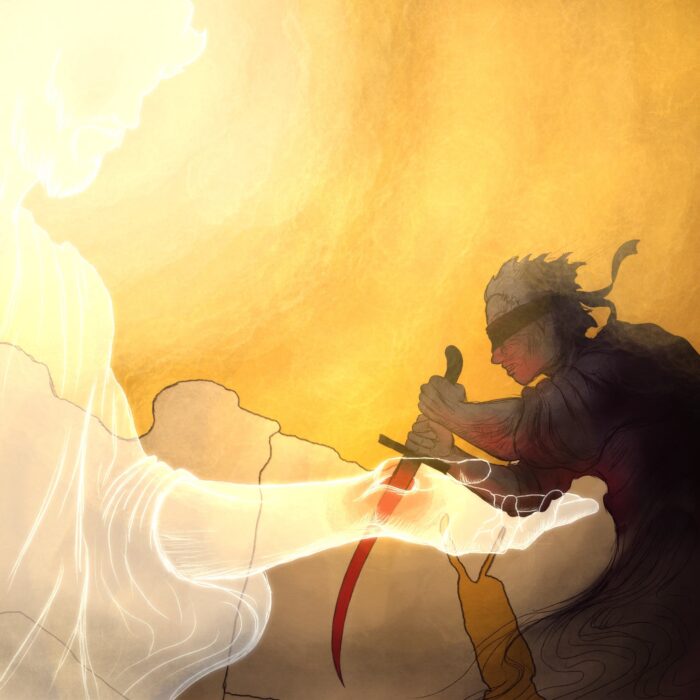John 19:5, “Behold the Man.”
The word used for “man” here can also mean simply “human” (recall that, until recently, “Man” / “Mankind” could mean all of the human race…the same is true for the Greek word here translated “man”). When God Incarnate stands before the judgment seat in the tattered regality of His mock-robe and crown of thorns, He is not merely *a* man, but *the* Man—the singular representative of the human race.
Here—in the Word who became flesh—is humanity; His body becomes the canvas of our rebellion, His shoulders bear the shame of our lost honor, His his brow is crowned with our curse, and His soul is shattered under our judgment…Truly, as Jesus stands up before the eyes of the world in sin-bearing shame, we—humanity—behold ourselves in him; in our God.
And it is only as we “Behold Humanity” in the stripped and scourged and shamed and crucified Jesus that we come to know our God. How is that so? Here is what I mean:
It is only as we assent to the judgment that Jesus embodies, only as we agree that, “yes, this IS me/humanity and this IS what I am/we are due,” —it is only as we assent to this judgment that we then come to realize, “and yet this is NOT me, it is my GOD bearing what is mine in my place….” Further, it is only as we realize this—that is, as we realize that the crucified Jesus is God-in-my-place, that He is God enduring from God what only those who have made themselves the enemies of God deserve—it is only as we realize this that we actually come to KNOW GOD…Because the great work of God’s redemption in Jesus Christ is not merely what God has done, but the definitive revelation of who God IS (John 1:18, 14:9).
In this way, then, as we “Behold the Man” in whom all of humanity who will ever trust in Him is vicariously represented, we also—by the illumination of the Spirit—“Behold our God”, which is the Good News of the Gospel (Isaiah 40:9).




